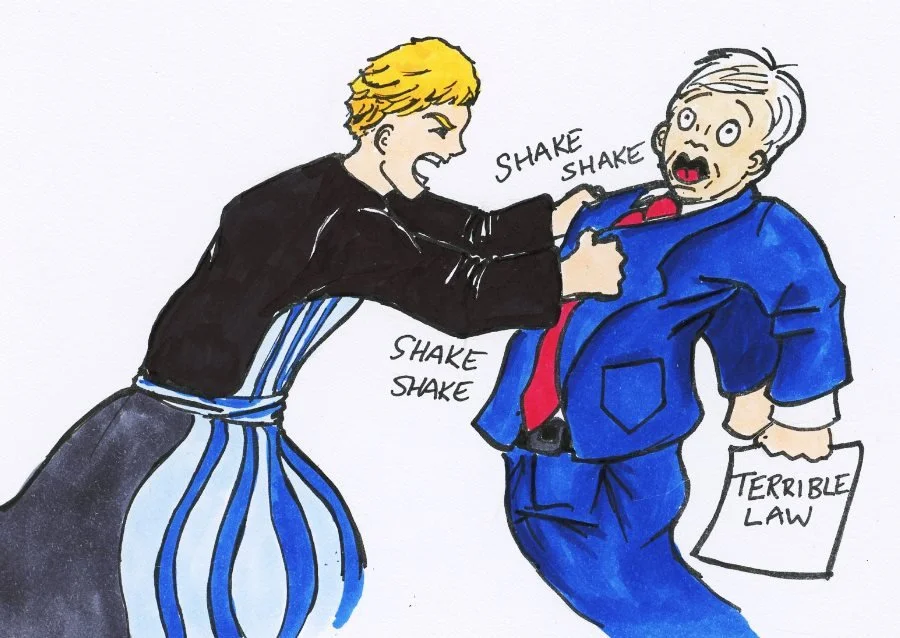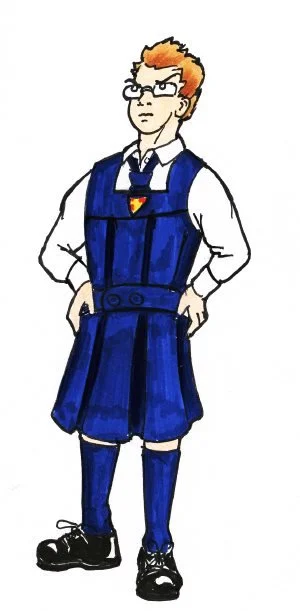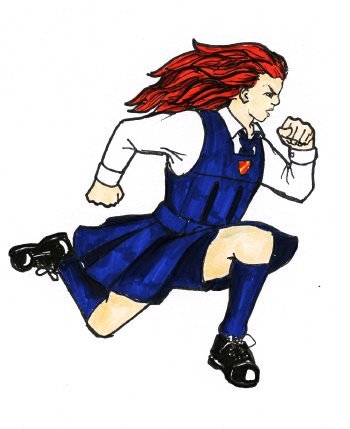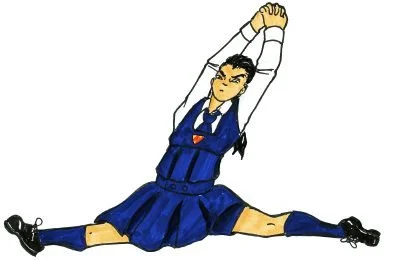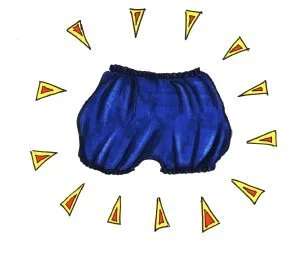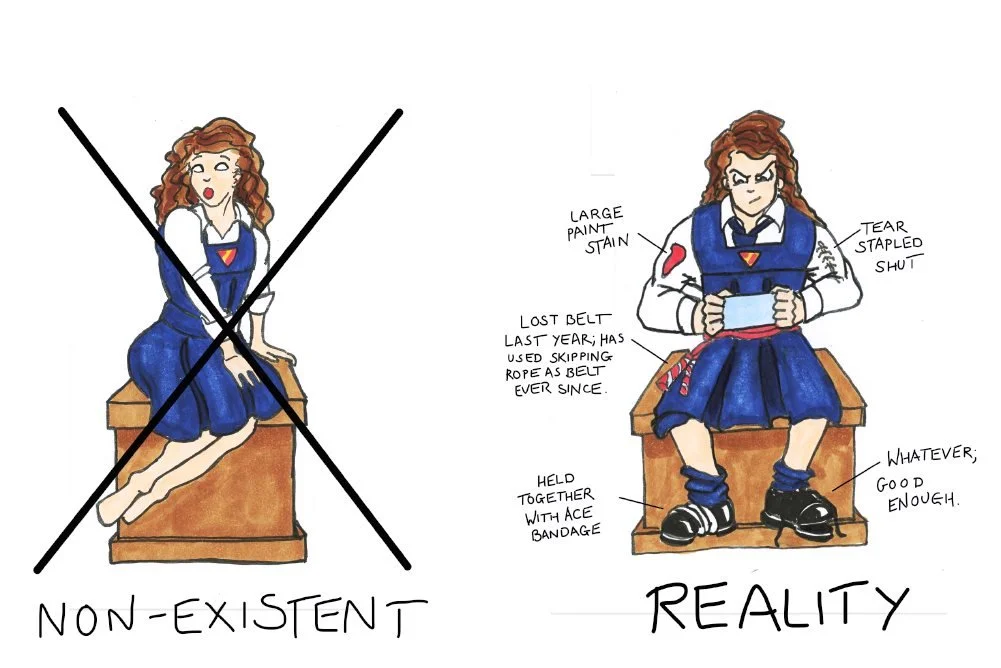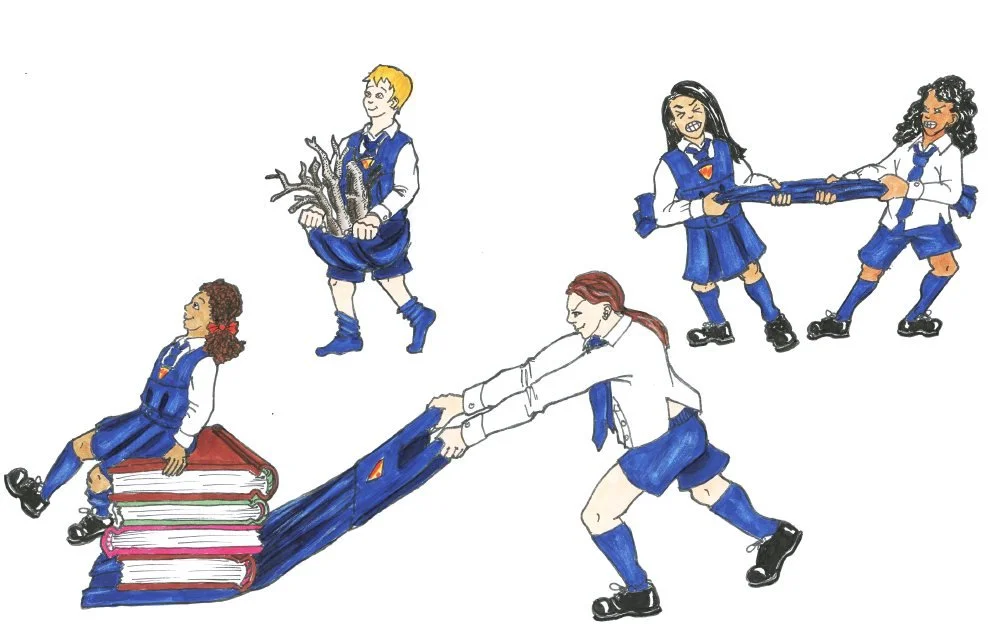FAR TOO MANY THOUGHTS ABOUT TUNICS
Now, there are few things better than watching a brilliant and beautiful woman deliver a series of brutal put-downs to a man who really, really deserves them.
And there are few better examples of that genre than when the beautiful and brilliant Julie Andrews, as Maria, chews out Captain Von Trapp about his shitty child-rearing tactics in The Sound of Music. It makes one fantasize pleasantly about locking Julie Andrews in a room with a bunch of Republican politicians so she can reduce them to blobs of quivering jelly.
“Senator, you have got to care about something other than oil executives and Elon Musk!”
And yet, there’s one part of the scene that strikes a wrong chord with me, that being the part where she explains why she replaced the children’s uniforms with improvised curtain-based alternatives: “Children cannot do all the things they're supposed to do if they have to worry about spoiling their precious clothes!”
I spent thirteen years of my life wearing a school uniform. There are plenty of legitimate reasons to be skeptical about uniforms: concern about class divisions between uniform and non-uniform schools, distaste for practices that carry a whiff of colonialism. And stupid enforcement of dress codes can mean that girls get told that they’re dressing too sexy or Muslims get bullied or Black kids are forbidden to have natural hairstyles. On the other hand, those problems arise in non-uniform schools as well, and the solution (i.e. not being assholes, letting people wear their religious raiment, letting Black people have hair) would be the same in either case.
Against those have to be balanced some clear advantages, like putting kids at the same school on a level playing field, making income inequalities less obvious. And some other inequalities, too. Well into my teens, all I wore was my mother’s old clothes, complete with middle-aged-lady pleated pants. That wasn’t from any lack of money- I just happened to be an utter thicko when it came to dressing myself. If I’d shown up to school in my normal clothes, I’d have been pelted with garbage until I drowned in banana peels and rancid pudding.
As it was . . . well, I didn’t escape being pelted with garbage, but I wasn’t quite as obvious a target.
Whatever the pros and cons, there’s one thing I’m prepared to scream and gibber and hop up and down and pound on tables about: Uniforms do not have to be stiff, formal, unnatural clothes that keep you from running about and playing in filth. In my case, at least, it was quite the opposite.
Here’s the uniform I wore for thirteen years. The main feature was a garment that would be called a gymslip in the United Kingdom, or a tunic in Canada, or (I believe) a jumper dress in the States. I preferred “tunic,” young dyke that I was, because it sounded pleasantly unisex.
Portrait of the dyke surviving adolescence.
But “gymslip” is a word worth bearing in mind, because it hints at the origin of the thing. Tunics were invented to be worn by girls during physical education classes.
It makes a mighty amount of sense. Tunics are not like dresses or skirts or kilts. The pleats flare out around you, so they restrict your movement about as much as your own skin. You can cartwheel in them, do the splits, or kick a bigoted Supreme Court judge in the goonies without the least trouble at all. And as you can see, there’s no chance of a wardrobe malfunction if the skirt flaps up, because you wear shorts underneath.
Shorts, I should say, are what one wears underneath these days. When I was a very small Benny, one wore bloomers, which were like giant flannel underpants that gathered at the waist and thighs. They were phased out in favour of boxer shorts when I was still in school. I didn’t mourn their loss- the aesthetic was lacking- but I promise you, there are few more comfortable things to wear on your lower half.
Not beautiful. Very comfortable.
So, they were comfortable and non-restrictive, those tunics. They were also bloody indestructible. That was partly down to the design- no crotch to rub, no cuffs to fray, no waistband to catch- and partly the material. They were made of serge, and that meant they lasted for fucking ever. Real talk: you cannot tear a serge tunic. Doesn’t happen. Try it and see. I have quite literally watched my schoolmates use their tunics to drag stacks of cinder blocks over concrete. Dust the tunic off afterwards, and it’s good as new. You could probably recycle old tunics into body armour- only you don’t have to recycle old tunics, because they never wear out.
All of which meant that uniforms were the furthest thing imaginable from precious clothes that had to be kept pristine. They were like boiler suits, a durable thing you threw on before you spent a day rolling on the grass and wrestling Catherine McAvity-Jones and lugging things to the art room and spilling yogurt all over yourself.
I know that girls in school uniform can be fetishized. But I think that would happen less often if people saw more of the real thing. At least in my school, even the most heterosexual fashion-conscious girls treated their uniforms more like welders’ aprons than outfits. They weren’t something that you wore for anyone else, and you didn’t care what they made you look like.
You didn’t revere or reverence them, those tunics, or fret about them, or dread outgrowing them. You just wore them.
I’m glad I had one.


